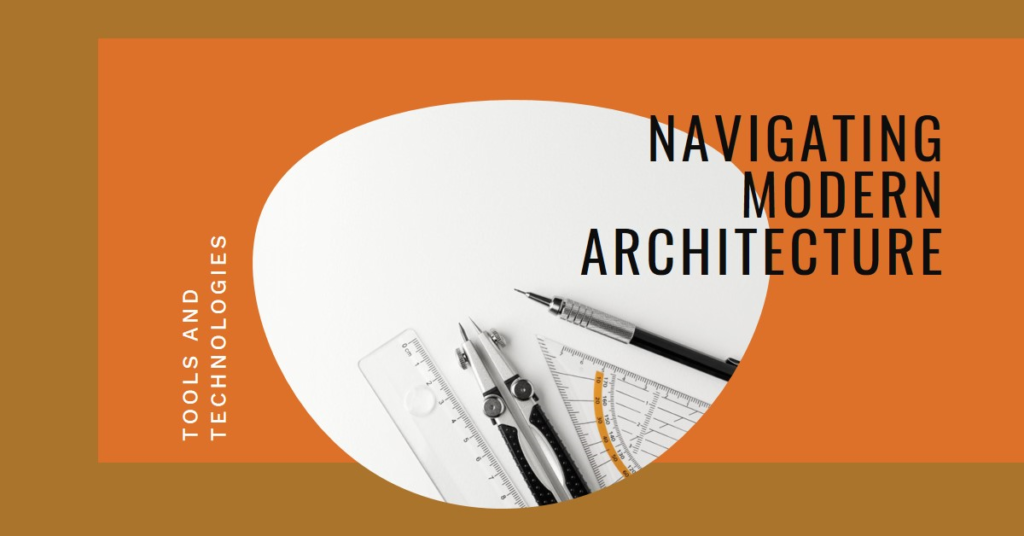
Table of Contents
Introduction: Architecture
In the ever-evolving landscape of architecture, the integration of cutting-edge tools and technologies has become imperative for staying competitive and delivering outstanding results. From advanced software solutions to innovative construction materials, the modern architect’s toolkit is vast and diverse. Navigating through this plethora of options can be daunting, but with the right approach and understanding, architects can harness these tools to elevate their designs and streamline their workflow.
Understanding Digital Design Software:
Digital design software has revolutionized the way architects conceptualize and communicate their ideas. With programs like AutoCAD, Revit, and SketchUp, architects can create intricate 3D models, generate detailed plans, and simulate real-world conditions with ease. These tools not only enhance the design process but also facilitate collaboration among architects, engineers, and clients.
Transitioning to Building Information Modeling (BIM):
Building Information Modeling (BIM) has emerged as a game-changer in the architecture industry, offering a more holistic approach to building design and management. Unlike traditional CAD software, BIM allows architects to create intelligent 3D models that incorporate valuable data about every aspect of a building, from its structural elements to its energy performance. By leveraging BIM tools like Autodesk BIM 360 and ArchiCAD, architects can optimize workflows, improve coordination, and mitigate risks throughout the entire lifecycle of a project.
Exploring Virtual Reality (VR) and Augmented Reality (AR) Applications:
Virtual Reality (VR) and Augmented Reality (AR) technologies are transforming the way architects visualize and experience their designs. With VR headsets and AR devices, architects can immerse themselves and their clients in virtual environments, providing unparalleled insights into spatial relationships, scale, and aesthetics. These immersive experiences not only enhance design comprehension but also facilitate more informed decision-making and client engagement.


Embracing Sustainable Design Practices:
Sustainability has become a cornerstone of modern architecture, driving the adoption of innovative technologies and materials that minimize environmental impact and maximize energy efficiency. From passive design strategies to renewable energy systems, architects are integrating sustainable principles into every stage of the design process. Tools like energy modeling software and life cycle assessment tools enable architects to evaluate the environmental performance of their designs and make informed choices that promote sustainability.
Incorporating Parametric Design Techniques:
Parametric design techniques empower architects to create complex, dynamic forms that respond intelligently to various parameters and constraints. By harnessing the power of algorithms and computational design software like Grasshopper and Dynamo, architects can explore endless design possibilities and optimize for factors such as structural efficiency, daylighting, and occupant comfort. Parametric design not only fosters innovation but also allows architects to achieve highly customized solutions tailored to specific project requirements.
Harnessing the Potential of 3D Printing Technology:
3D printing technology has revolutionized the way architects prototype and fabricate architectural components, offering unprecedented flexibility and precision. From intricate models to full-scale building components, 3D printing enables architects to materialize their designs with remarkable speed and efficiency. With advancements in materials and printing techniques, architects can now explore new aesthetic possibilities and construction methodologies that were previously unattainable.
Adopting Sustainable Materials and Construction Techniques:
In addition to sustainable design practices, architects are increasingly turning to innovative materials and construction techniques that minimize waste, reduce embodied carbon, and enhance building performance. From engineered timber to recycled materials, these sustainable alternatives offer viable solutions for addressing the environmental challenges facing the construction industry. By prioritizing the use of sustainable materials and construction techniques, architects can contribute to a more resilient and regenerative built environment.
Conclusion:
As the architectural profession continues to evolve, architects must embrace the tools and technologies that drive innovation and sustainability. From digital design software to 3D printing technology, each tool offers unique opportunities to enhance creativity, efficiency, and environmental responsibility. By staying informed, adapting to new technologies, and collaborating with industry partners, architects can navigate the complexities of modern architecture with confidence and unlock new possibilities for shaping the built environment of the future.


